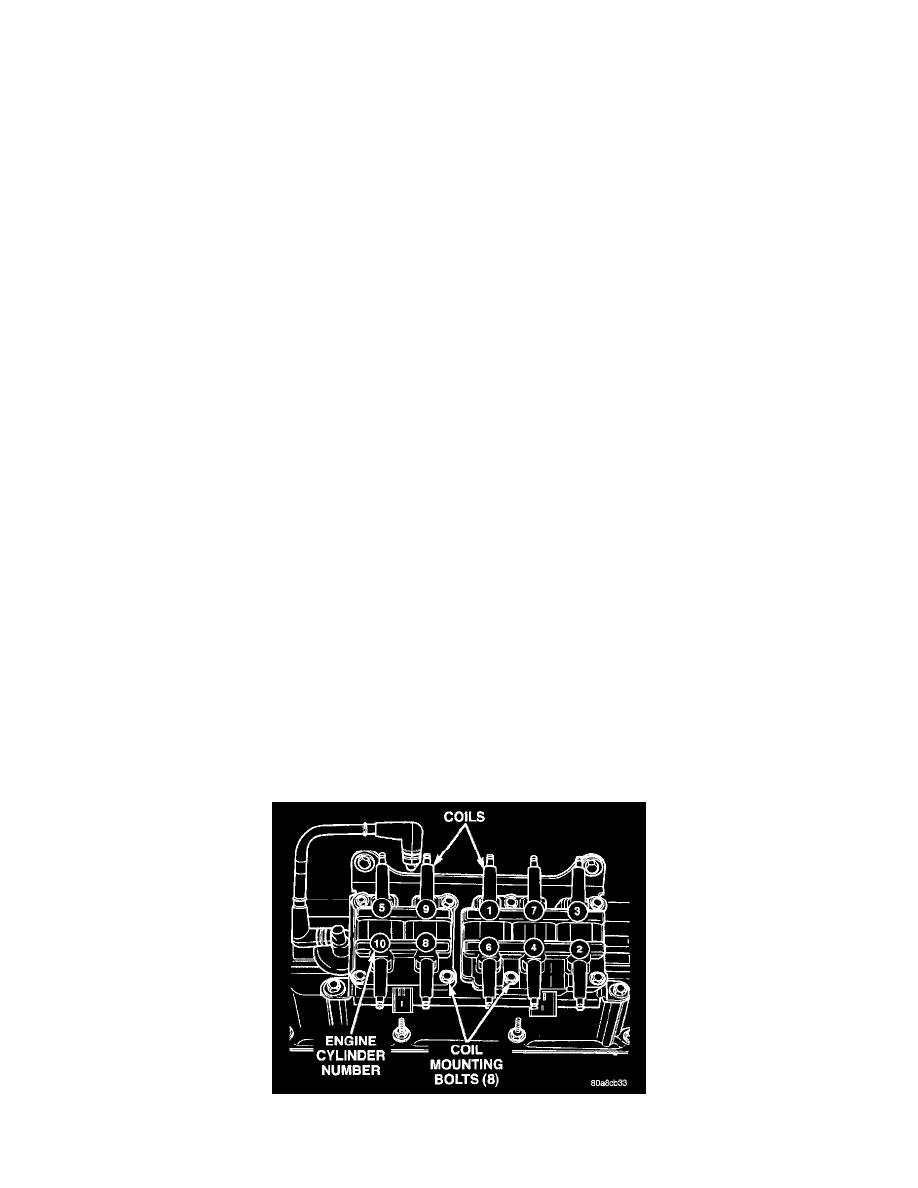RAM 3500 Truck 2WD V10-8.0L VIN W HDC (2000)

Ignition Relay: Description and Operation
IGNITION SYSTEM
The ignition system is controlled by the Powertrain Control Module (PCM) on all engines.
The ignition system consists of:
-
Spark Plugs
-
Ignition Coil
-
Secondary Ignition Cables
-
Distributor (contains rotor and Camshaft Position Sensor)
-
Powertrain Control Module (PCM)
-
Also to be considered part of the ignition system are certain inputs from the Crankshaft Position Sensor, Camshaft Position Sensor, Throttle
Position Sensor and MAP Sensor.
IGNITION SYSTEM
The ignition system used does not use a conventional mechanical distributor.
The system will be referred to as a distributor-less ignition system.
The ignition coils are individually fired, but each coil is a dual output. Refer to Ignition Coil Pack for additional information.
SPARK PLUGS
This engine uses inductive type spark plugs.
Spark plug resistance values range from 6000 to 20,000 ohms (when checked with at least a 1000 volt spark plug tester). Do not use an ohmmeter
to check the resistance values of the spark plugs. Inaccurate readings will result.
To prevent possible pre-ignition and/or mechanical engine damage, the correct type/heat range/number spark plug must be used.
Always use the recommended torque when tightening spark plugs. Incorrect torque can distort the spark plug and change plug gap. It can also pull
the plug threads and do possible damage to both the spark plug and the cylinder head.
Remove the spark plugs and examine them for burned electrodes and fouled, cracked or broken porcelain insulators. Keep plugs arranged in the
order in which they were removed from the engine. A single plug displaying an abnormal condition indicates that a problem exists in the
corresponding cylinder.
Spark plugs that have low mileage may be cleaned and reused if not otherwise defective, carbon or oil fouled. Also refer to Spark Plug Conditions.
CAUTION: Never use a motorized wire wheel brush to clean the spark plugs. Metallic deposits will remain on the spark plug insulator and will
cause plug misfire.
SPARK PLUG CABLES
Spark plug cables are sometimes referred to as secondary ignition wires.
The spark plug cables transfer electrical current from the ignition coil(s) and/or distributor, to individual spark plugs at each cylinder. The resistive
spark plug cables are of nonmetallic construction. The cables provide suppression of radio frequency emissions from the ignition system.
Ignition Coil Packs
